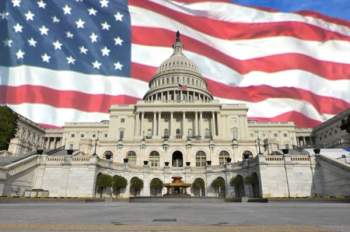
New York Times v. Sullivan

Popular In Constitution
Purpose Of Lifetime Appointment And Pros And Cons Enumerated Powers Bicameral Legislature Background Article 3 Of The Constitution We The People 1st Amendment Who Wrote The Constitution Judicial Review Equal Protection Clause Three Fifths Compromise 10th Amendment 5th Amendment
New York Times v. Sullivan (1964) is a significant United States Supreme Court case which held that the court must find evidence of actual malice before it can hold the press guilty for defamation and libel against a public figure. This was a landmark Supreme Court decision regarding freedom of the press.
New York Times v. Sullivan established the actual malice standard which requires the plaintiff to prove that the publisher was aware that the statement was false and published it anyway. This places a very high burden of proof on the plaintiff in libel cases.
The concept of public figures is important in freedom of the press cases. A public figure is a person that puts themselves in the eye of the public, such as a politician or celebrity. These individuals have the burden of proof in defamation and libel cases. This was a very controversial issue at the time because of the highly publicized civil rights cases in the South, where many Southerners continued to practice segregation.
News organizations that desired to run these stories were often hesitant due to fear that they would be dragged into a libel suit. When the Supreme Court held in New York Times v. Sullivan that the Times was not guilty of libel, it opened up many opportunities for news sources to print stories about the civil rights cases in the South.
In 1960, the New York Times ran an advertisement about Martin
Luther King that contained inaccuracies about the conduct of the Montgomery,
Alabama police department. The newspaper alleged that the police department
took unlawful action against civil rights protesters. The Montgomery Police Commissioner,
L. B. Sullivan, wrote a letter to the New York Times demanding they run a
retraction of the story. When the Times refused, Sullivan brought suit against
the newspaper and received damages. The Times still did not publish a retraction
because they claimed the advertisement did not specifically name Sullivan and
was not a condemnation of his conduct.
In New York Times v. Sullivan, the United State Supreme Court held
that the actions of the New York Times were not sufficient for a libel suit.
The New York Times was protected under the freedom of the press clause of the
First Amendment, which states that "Congress shall make no
law...abridging the freedom of speech, or of the press". The Court ruled
under the actual malice standard. This would require Sullivan to prove that the
New York Times knew the statements against him were untrue and acted recklessly
through a conscious lack of investigation by publishing them. The Supreme Court
determined that the Alabama State court's award of punitive damages to Sullivan
was not appropriate due to the Times' Constitutional right to freedom of the
press.
New York Times v. Sullivan was the first time that the Court used the concept of actual malice in a freedom of the press case. The actual malice standard requires the plaintiff to prove that the plaintiff had knowledge of the untruth of the statements published, rather than the plaintiff having to prove the truth of the statements.
NEXT: Northern Securities Co v. United States



















